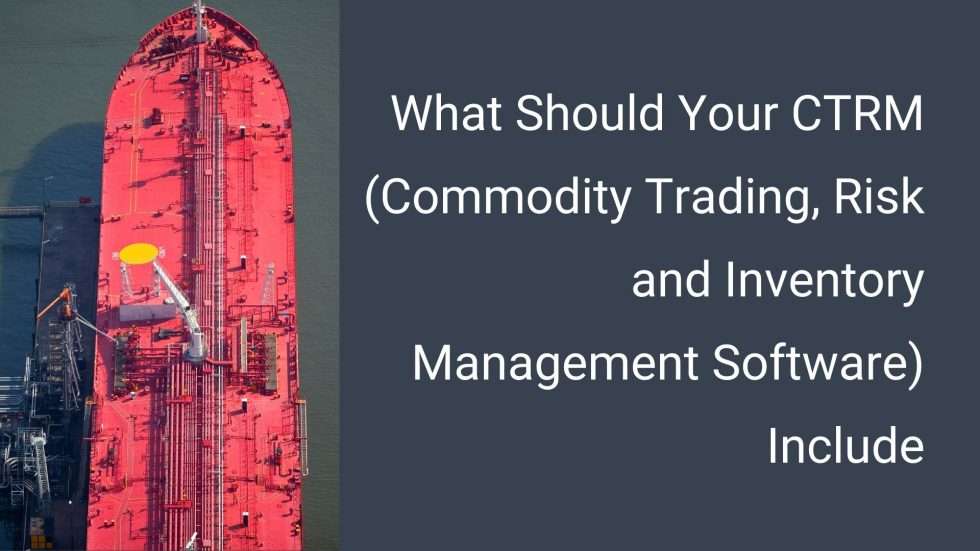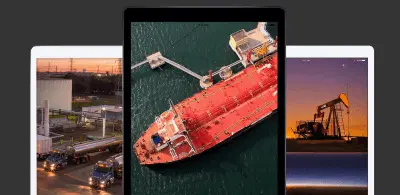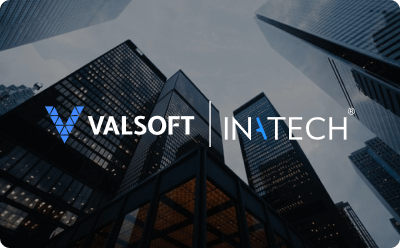What Should Your CTRM (Commodity Trading, Risk and Inventory Management Software) Include - Inatech
- February 9, 2022
- Posted by: Tom Hedge
- Blogs

Commodities including agricultural products, precious metals, or fuels (oil or renewables) are raw materials that are used to create more complex or finished goods. Because of their volatile prices and ever-changing supply and demand, commodities play a critical role in powering economies and generating profitable opportunities through trading. These quintessential physical products are sold in an associated marketplace without much differentiation on qualitative features. However, with opportunities lies some risks which can be managed well with the help of digitalisation and advanced analytics to keep your organization one step ahead.
Read through this article to know more about commodity trading, associated risks and how a best-in-class CTRM (commodity trading and risk management) software can help businesses succeed.
What Is Commodity Trading?
The commodities can be traded in two types of markets.
- Spot market: In this type of market, cash transactions are involved in the physical trading of commodities and the exchange takes place in the present.
- Futures market: As the name suggests, in this market, the trading obligations takes place on a future date through contracts, instead of the actual commodities. These commodities are traded on specific platforms known as commodity exchanges which allow traders to exchange commodities.
However, there is always some risk involved in the trading of these commodities and the management of these risks is known as commodity risk management.
What Are Commodity Risks?
The commodity market is highly complex due to various regulations and the involvement of a multitude of products. On top of that, the volatility of commodity prices and the market forces influencing supply and demand can make a huge impact on trading. That is why commodity price risk is critical in commodity trading.
Let us understand more about commodity risk.
What Are the Different Types of Commodity Risk?
Traders can be exposed to the following types of risks.
- Price risk: This risk occurs due to price fluctuations of commodities which are in turn affected by various macroeconomic factors.
- Regulatory risk: Often national and global regulations or laws can have an impact on the prices and availability of commodities which can create risks and affect trading.
- Quantity Risk: This type of risk occurs due to the availability of commodities. This can arise due to certain regulations or environmental or natural causes.
- Cost risk: This risk arises due to a significant increase in the costs of commodities.
Which Industries Are Exposed to Commodity Risk?
The following sectors are more exposed to commodity risks in trading.
- Energy industry which includes both conventional sources of energy (oil, coal, or natural gas) and renewables (biofuels, methanol, hydrogen, wind energy, or solar power).
- Agricultural industry which includes edible as well as non-edible goods or products including cotton, wheat, cocoa, palm oil, rubber, and so on.
- Mining or metal industry which includes precious metals such as gold, silver, or platinum, as well as industrial products such as aluminium, iron ore, copper, zinc, tin and more.
What Is CTRM software?
Traditionally, risk managers, commodity traders, and finance personnel have operated through spreadsheets, in-house systems, or a combination of two or more systems, which increased the operational complexity. However, in today’s landscape, the adoption of commodity-specific, real-time, smart systems with in-built advanced analytics and modern architecture can help businesses manage risks and make rapid decisions. One such system is commodity trading and risk management or CTRM software, which is now the backbone of the commodity trading business.
CTRM platform refers to a set of software applications used to manage business operations or processes by commodity trading companies. Depending on the commodities you handle, where you operate, and what does your workforce needs to manage, the CTRM systems can work as a single, integrated system that manages all your front-, middle-, and back-office applications.
The CTRM software comprises tools that help companies in managing and automating
- Trading
- Hedging
- Financial accounting and reconciliations
- Risk management
- Inventory management
- Reporting
Moreover, CTRM software vendors can also offer industry-specific features or tools including credit instruments trading, truck scheduling, contract management, or pipeline scheduling which are useful for energy traders. These features are incorporated to help commodity businesses efficiently manage processes and maximize their margins.
What Should Your CTRM Software Include?
Adopting an effective CTRM system can help you
- Manage and trade a wide variety of commodities including all types of petroleum such as crude, distillates, and renewables profitably.
- Automate processes from trading, hedging, valuations, risk management, inventory, to logistics and finance, reducing errors and saving money.
- Make better, data-driven decisions.
- Adopt best practice workflows to manage compliance and meet the strict requirements of market regulators.
- Improve cash management and cash flow.
- Streamline supply chain and logistics.
- Easily access trading, sales, inventory and operations data in order to accurately monitor the profit or loss of any given commodity trade.
Therefore, to reduce your manual, mundane work, you should implement a CTRM solution that works across everything from trading to invoicing.
Your choice of CTRM should have these must-have features and functionalities, depending on your business need.
- Ability to provide real-time updates on market exposure, risk exposure, available credit, position, and PnL.
- Allows a single version of truth by integrating all front-, mid-, and back-office operations in a unified workflow.
- Ease of integration with third-party systems or feeds.
- Cloud migration with the objective of reducing IT, hardware, and maintenance costs.
- Rapid implementation with scope for remote collaboration amongst the workforce.
- Advanced analytics and powerful business intelligence tools to help make quick, data-driven decisions.
- Eliminates dependence on manual, mundane tasks and provide greater flexibility and productive time, so your team can focus on growth plans.
- Personalised dashboards and reporting
- Regular system upgrades without uncertainties in product development due to the involvement of third parties.
- Easy user adoption
- Strong customer support
At Inatech, we deliver scalable, smart CTRM solutions to help you overcome the uncertainty in the complex commodity trading market. To know more about how you can seamlessly integrate our CTRM solutions into your processes, click here!


